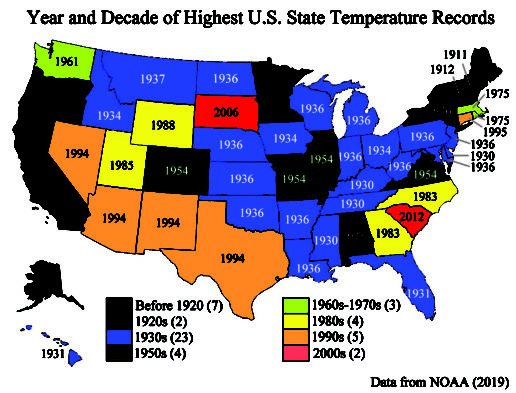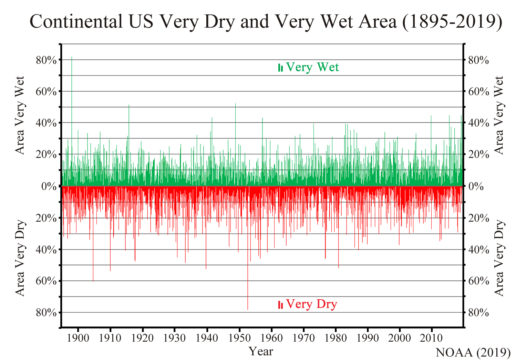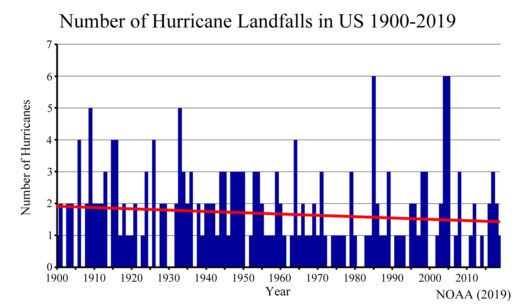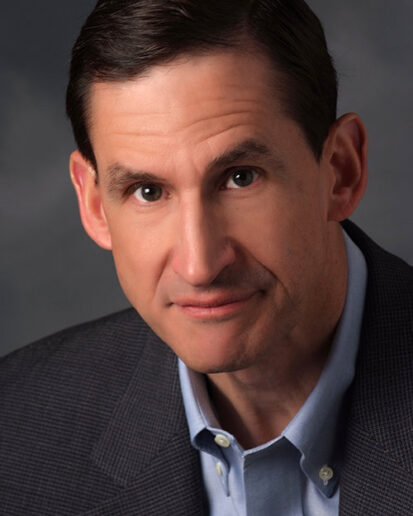
Last month, 74 US medical and public health groups released a “U.S. Call to Action,” declaring climate change a “true public health emergency” that can be solved by “urgent action.” The statement calls for a transition away from hydrocarbon energy and a move to a low-carbon economy. But actual weather and health trends don’t support either the alarm or the demanded actions.
The statement was endorsed by the American Medical Association, the American Heart Association, and the American College of Physicians. These and other organizations pronounced climate change the “greatest public health challenge of the 21st century.”
The statement proclaims that “extreme heat, powerful storms and floods, year-round wildfires, droughts, and other climate-related events” are caused by “fossil fuel combustion,” which is said to be the “primary driver of climate-change.” They go on to say that we can solve these problems by transitioning away from hydrocarbon fuels, coal, oil, and natural gas, and toward renewable energy and energy efficiency.
Last month, the majority of the continental U.S. was caught in a heat wave. About 85 percent of the population experienced daily high temperatures of over 90 degrees Fahrenheit and more than half saw temperatures of over 95oF. But these temperatures were far below state record high temperatures of past decades.
History shows that the warmest U.S. decade on record was the 1930s, long before industry emitted significant amounts of carbon dioxide. According to the National Oceanic and Atmospheric Administration (NOAA), 23 of the 50 state record high temperatures were recorded during the 1930s. Thirty-six of the 50 state record highs occurred prior to 1960.

Last month, temperatures in Iowa, Illinois, Indiana, Ohio, and Pennsylvania peaked at about 100 degrees Fahrenheit. But these temperatures were far below the state record highs, which were Iowa (118oF in 1934), Illinois (117oF in 1954), Indiana (116oF in 1936), Ohio (113oF in 1934), and Pennsylvania (111oF in 1936).
This year has also been a year of floods in the Mississippi River valley. Unfortunately, our medical professionals now parrot the idea that floods and droughts are more extreme than in past years. But NOAA has very good records over the last century for the portion of the continental US that is either very wet or very dry, using a metric called the Palmer Drought Index. The index shows no significant trend of increasing drought or flood over recent decades.

“Powerful storms” are listed by the health statement as one of the results of human-caused global warming. Hurricane Barry dropped up to 15 inches of rain on parts of Louisiana earlier this month. The storm was said to be stronger from human emissions.
But there is no evidence that storms are getting either stronger or more frequent. Nine of the 13 strongest hurricanes to make U.S. landfall in the historical record came ashore prior to 1965. Both the number of hurricanes and the number of strong hurricanes making U.S. landfall has been flat to declining since 1900. NOAA data also shows that the number of strong tornadoes has been declining since the 1970s.

Last year’s forest fire disasters in California were blamed on human-caused global warming. Health professionals now appear to believe that wildfires are “year-round” and caused by emissions from our industry and vehicles.
But recent Congressional testimony by Dr. Judith Curry disputes this conclusion. Dr. Curry provided evidence that the U.S. area burned by fires prior 1930 was at least as large as today. She also cited a study that showed that the percent of U.S. sites reporting fires was much larger prior to 1900, before fire-suppression techniques were used.
In fact, rather than being a health crisis, much evidence shows that moderately warmer temperatures are good for people. The U.S. influenza season is approximately November through March every year, during the cold months. The influenza season in the Southern Hemisphere is during the southern winter months. More people get sick during periods of cold temperature than during hot temperatures.
Many peer-reviewed studies show that more people die during winter months than summer months. The late Dr. William Keating studied temperature-related deaths for people aged 65 to 74 in six European countries. He found that deaths related to cold temperatures were nine times greater than those related to hot temperatures. Evidence shows that if Earth warms, temperature-related deaths will likely decrease overall.
The climate alarm from health professionals defies common sense. According to data from NOAA, NASA, and the Climate Research Unit in East Anglia University in the UK, average global surface temperatures have warmed only one degree Celsius in 135 years, since 1880.
Average temperatures in Norfolk, Virginia are 5.8oC warmer than in Chicago, Illinois. Average temperatures in Miami, Florida are more than 15oC warmer than Chicago. Is everyone dying from the heat in Norfolk and Miami?
And why do most U.S. senior citizens retire to Florida, Texas, and Arizona, rather than North Dakota, Maine, and Alaska? Don’t they know our medical professionals say that warm climates are dangerous?
The belief that changing light bulbs, driving electric cars, and erecting wind turbines can improve human health is as medieval as the belief that bloodletting can cure disease.
Originally published in NewsBlaze.




















